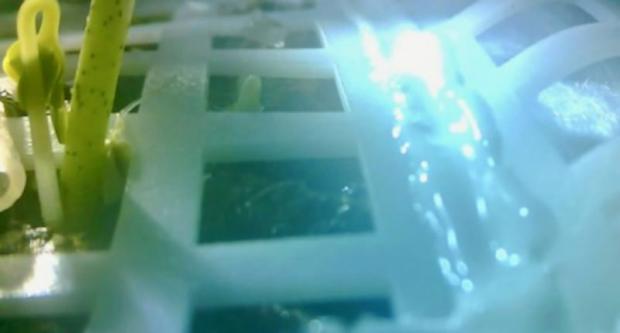
Breaking News
 Paper Silver IMPLODES: Experts Predict HUNDREDS PER OUNCE is Coming
Paper Silver IMPLODES: Experts Predict HUNDREDS PER OUNCE is Coming
 Trump Does it Again (and Again)
Trump Does it Again (and Again)
 International Judicial Authority Declares mRNA Injections Are Biological And Technological...
International Judicial Authority Declares mRNA Injections Are Biological And Technological...
 What Nobody Tells You About Homesteading
What Nobody Tells You About Homesteading
Top Tech News
 3D Printed Aluminum Alloy Sets Strength Record on Path to Lighter Aircraft Systems
3D Printed Aluminum Alloy Sets Strength Record on Path to Lighter Aircraft Systems
 Big Brother just got an upgrade.
Big Brother just got an upgrade.
SEMI-NEWS/SEMI-SATIRE: October 12, 2025 Edition
 Stem Cell Breakthrough for People with Parkinson's
Stem Cell Breakthrough for People with Parkinson's
 Linux Will Work For You. Time to Dump Windows 10. And Don't Bother with Windows 11
Linux Will Work For You. Time to Dump Windows 10. And Don't Bother with Windows 11
 XAI Using $18 Billion to Get 300,000 More Nvidia B200 Chips
XAI Using $18 Billion to Get 300,000 More Nvidia B200 Chips
 Immortal Monkeys? Not Quite, But Scientists Just Reversed Aging With 'Super' Stem Cells
Immortal Monkeys? Not Quite, But Scientists Just Reversed Aging With 'Super' Stem Cells
 ICE To Buy Tool That Tracks Locations Of Hundreds Of Millions Of Phones Every Day
ICE To Buy Tool That Tracks Locations Of Hundreds Of Millions Of Phones Every Day
 Yixiang 16kWh Battery For $1,920!? New Design!
Yixiang 16kWh Battery For $1,920!? New Design!
 Find a COMPATIBLE Linux Computer for $200+: Roadmap to Linux. Part 1
Find a COMPATIBLE Linux Computer for $200+: Roadmap to Linux. Part 1
China's Chang'e-4 probe sprouts the first ever seeds on the Moon

It says a sealed container carried aboard the lander has given rise to the first ever seedlings to sprout on the Moon, marking tiny but important progress in its plans to establish a lunar base by 2022.
The Chang'e-4 mission's science objectives are varied, including conducting pioneering radio astronomy from the Moon's far side, scouting its uncharted areas for signs of water and uncovering ancient secrets about how the satellite was formed.
Also packed aboard the Chang'e-4 spacecraft before it was fired into space on December 8 was a capsule prepared by scientists at Chongqing University containing an important biological growth experiment. Through it, the researchers hope to learn more about how plants develop in the low gravity, high radiation and wildly fluctuating temperatures of the lunar environment.
To investigate this, the team packed seedlings for cotton, potato, rapeseed, and thale cress plants, along with yeast and fruit fly eggs. It was hoped that the fruit flies and yeast, as consumers and decomposers, could consume oxygen and produce carbon dioxide, which the plants could then use for photosynthesis to create a miniature biosphere inside a sealed container on the Moon.







